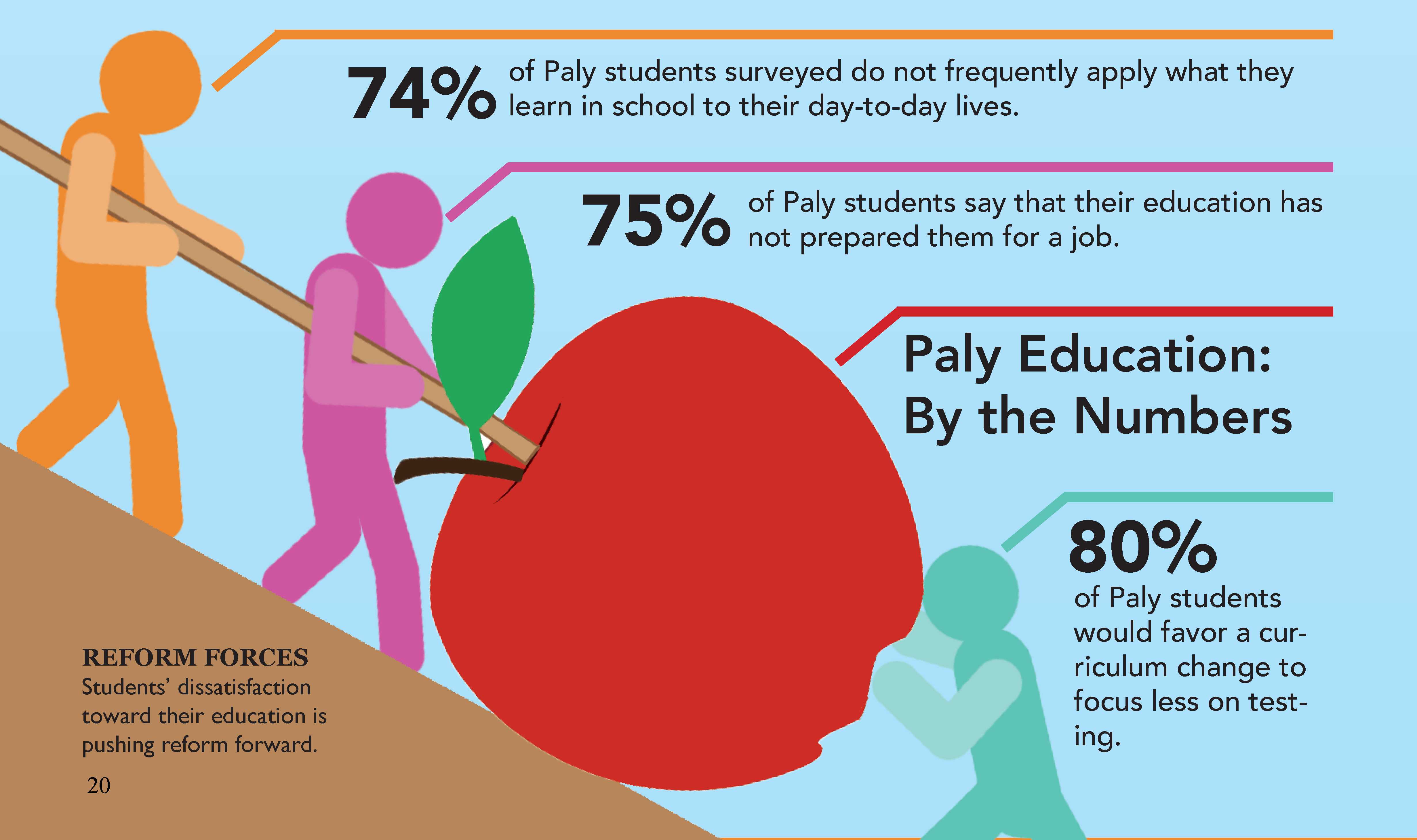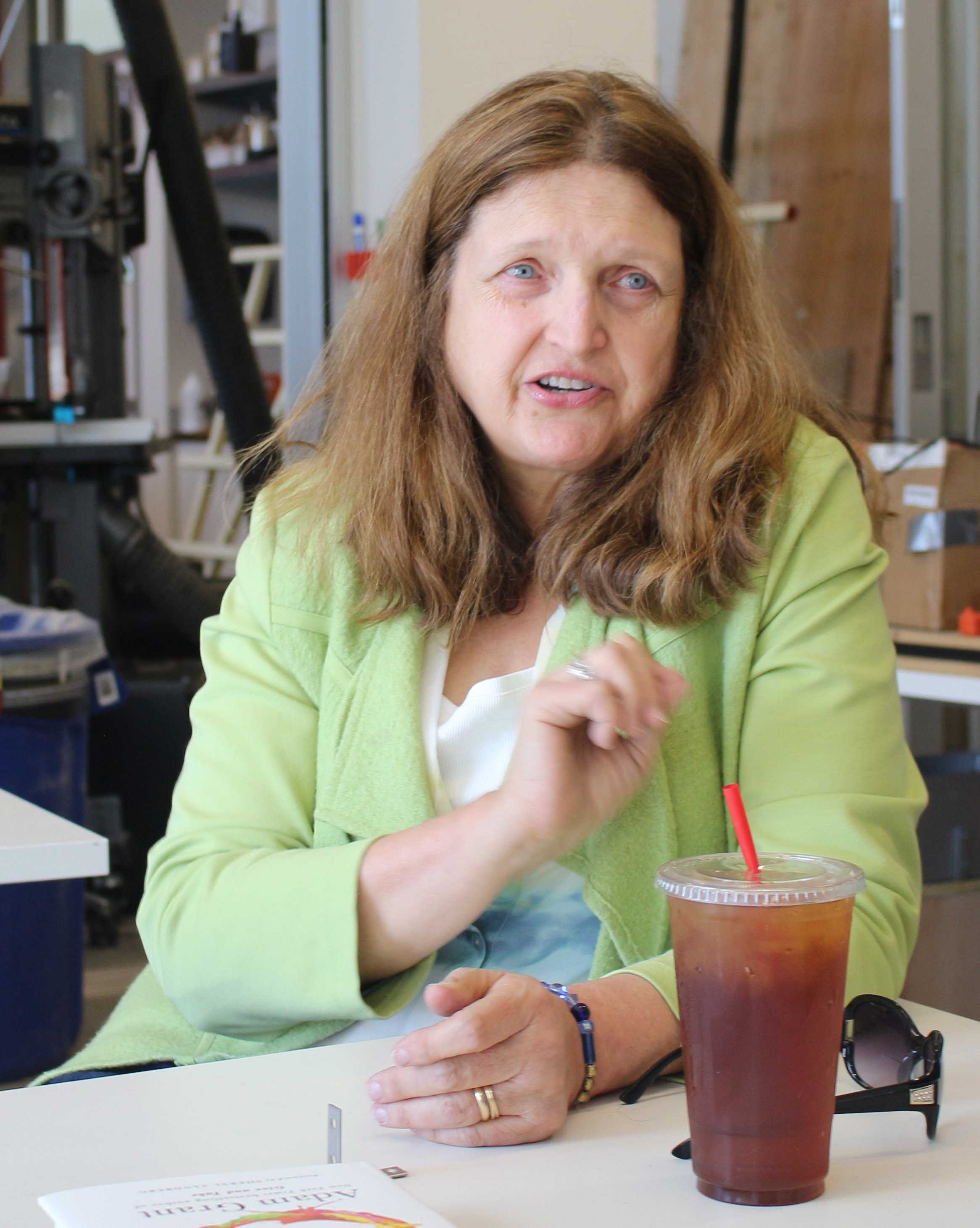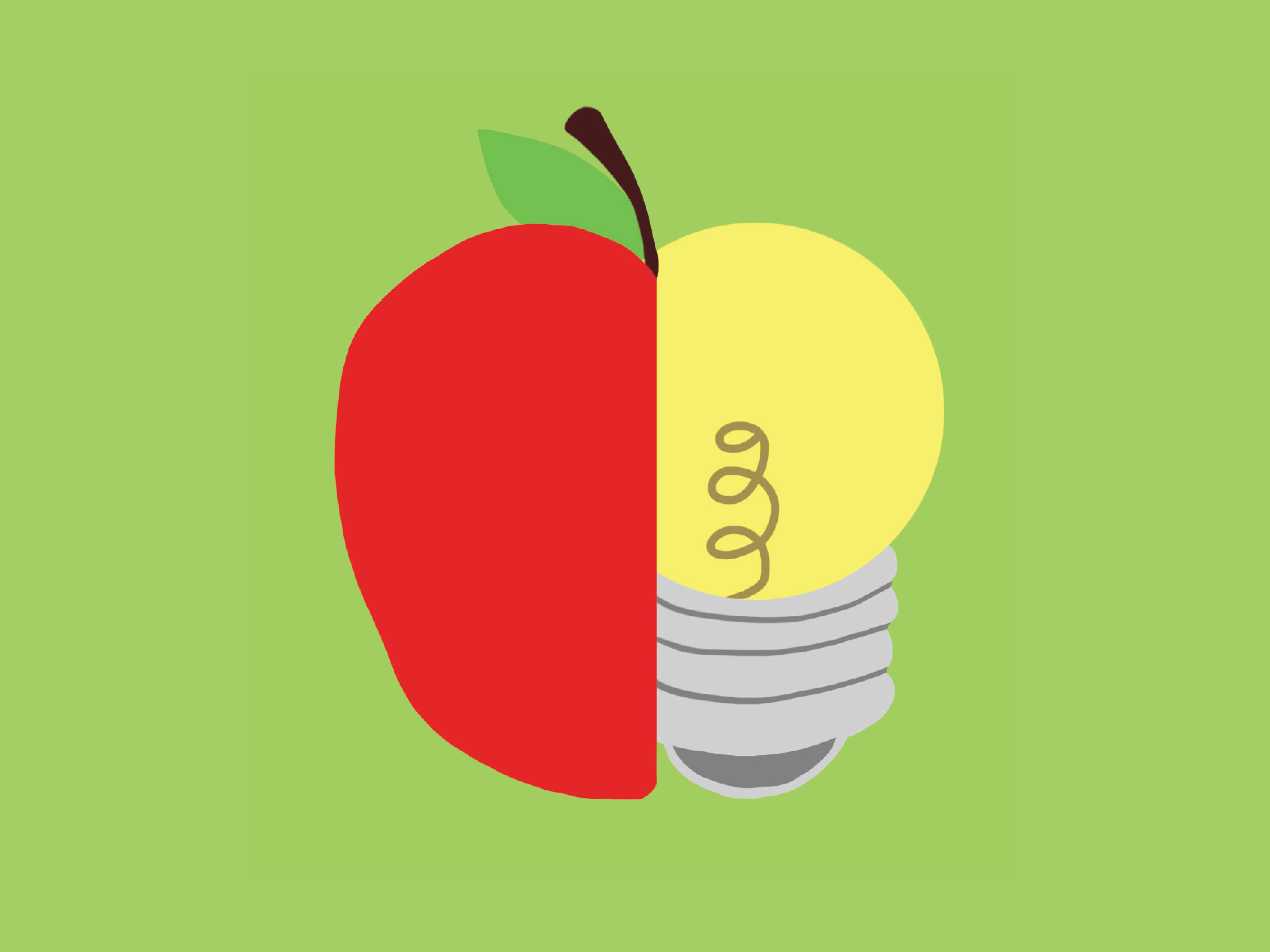We all remember learning cursive in elementary school. For hours on end, we would take painstaking care to scribe elegant, albeit mostly illegible, cursive forms on our worksheets, as we were told that it would be an indispensable skill for the rest of our lives. We also remember when we were assigned our first typed essay in middle school, and the ensuing realization that computers have rendered cursive writing redundant. Today, essays are usually typed, and the only time we ever use cursive is to sign standardized tests.
Learning cursive in common curriculum, though relatively benign, it is symbolic of a greater issue affecting the Palo Alto Unified School District and the nation as whole. As it stands, common curriculum is outdated and stands no chance of keeping up with the innovations of the 21st century. The last major piece of education reform, No Child Left Behind enacted by President George Bush in 2002, started a national craze over standardized testing and restricted schools to focus on fundamental math and literacy skills, technological advances have ushered the world into a new era. These advances bring decades of knowledge to students’ fingertips and make rote memorization even less applicable.
Although the sheer size of the modern education system means that systemic change may come slow, students, educators and employers alike are beginning to rally together to call for a new wave of education reform.
The Need for Reform
Palo Alto High School may appear to be the gold standard for public school
education, literally boasting a “gold” rating from the US News and World Report, however, statistics show that Paly students do not feel prepared to face any challenges that may come their way in the working world. In a Verde survey conducted with a random sample of 138 Paly students in May 2016, 74 percent of students say that they do not frequently apply what they learn in school to their day to day life and 75 percent of students surveyed say that their high school education has not prepared them for getting a job. Furthermore, a whopping 80 percent of students surveyed say that they would favor a curriculum change to focus less on traditional testing.

Bernie Trilling, CEO of 21st Century Learning Advisors, author and Paly parent, has been a long time advocate for education reform. According to Trilling, the statistics gathered at Paly are not uncommon. Around the world, traditional education systems are making students bored, unhappy and unprepared for the workplace — pushing the unemployment rate for young adults to unprecedented heights.
“The statistics are astounding,” Trilling says. “The employers aren’t seeing the skills they need and students aren’t getting jobs because they don’t have the skills that are needed now.”
The motivation for education reform extends beyond the employability of students. In January, a coalition of colleges led by the Harvard School of Education wrote “Turning the Tide,” a report advocating for meaningful ethical and intellectual engagement in college admissions instead of applications chalked full of Advanced Placement classes and standardized test scores. According to the report, “[students’] concern for others is often drowned out by the power and frequency of messages from parents and the larger culture emphasizing individual achievement.” To address this issue, the coalition suggests that students steer clear of traditional measures of academic success and reduce their fixation on test scores and AP courses.
The status quo is outdated and there is a call for a shift to a new education model that encourages deep intellectual and personal involvement. The question isn’t whether education reform will happen, but how it will be implemented.
Reform in Action

Kim Saxe, a Paly class of 1974 alumna and the current director of Nueva High School’s Innovation Lab and entrepreneurship program, is one of the California’s most successful advocates for education reform. Since Nueva High School was launched in 2013, it has become the Bay Area’s flagship alternative education program, boasting unique curricula ranging from steel drumming to the economics of environmental policy. However, perhaps the most notable aspect of Nueva is its student body’s culture of intellectual curiosity. By integrating alternative education techniques such as project based learning and design thinking throughout its standard curricula, and by encouraging collaboration among both students and teaching staff, Nueva has become a proving point for education reform.
According to Saxe, the primary goal of Nueva is not preparation for college admissions or scoring well on standardized tests, but to foster curiosity.
“I think having students do less, but at a much deeper level of involvement with more perspectives, is one of the most important things.,” Saxe says. “Working with others is also absolutely critical. That was less so when jobs were discrete pieces, but now you’re expected to be a collaborator/ You’re expected to form and maintain a network and have the synergies of multiple people working together.”
Nueva aims to achieve deep thinking by continuing to integrate project based learning in its curricula. It aims to not only teach content, but also application and problem solving.
According to Trilling, knowing how to apply knowledge and learning how to learn, a skill he has coined as “meta-learning,” are the skills most essential to students today. In a network of 10 schools that Trilling studied over five years, he found that the factor common to the schools that best promoted applied knowledge and meta learning was an emphasis on project based learning and public presentations of findings.
“It [Their curricula] was all project based and students presented their work to the public,” Trilling says. “That turned out to be extremely important for motivation, getting the community involved, and getting experts involved to help the kids learn. It opened up education to a much broader world than just the classroom.”
Although the value of project based learning has been repeatedly proven in alternative education programs, Saxe indicates there is considerable resistance from parents who are concerned that project based learning comes at the expense of college admissions. She hopes to change this mindset.
“Parents want what is best for their kids, definitely,” Saxe says. “But they’re not always fully appreciating of how much the world has changed. So they’re preparing their students for what they have went through, not necessarily preparing for the future. I’m really trying to wake parents up to how different it is now.”
Looking Towards the Future
Today, like many schools across the nation, Paly lags behind the needs of students, colleges and society. However, the Palo Alto Unified School district is making strides toward modernizing curricula and fostering internal motivation for learning among students. Today, alternative education programs like Advanced Authentic Research, blended learning and Paly’s alternative English pathways may just be a taste of much greater reform in the district’s future.
Since Supt. Max McGee joined PAUSD in 2014, the unifying theme of alternative education programs in the district has been “preparing students for careers that don’t exist yet.” McGee hopes that expanding programs like AAR, which has grown from 11 to 245 students in a little over a year, will motivate students to learn applicable skills and reduce focus on academic achievement.
“My message is that you’re here to learn, not just to get a high GPA and stack up AP courses,” McGee says. “You learn by exploring something that is of great interest to you, you learn by making mistakes, you learn by creating a network of resources to help you solve your problem or to address a challenge.”
This summer, PAUSD will be running the Secondary School Learning Design Team over the summer for faculty to brainstorm new alternative curricula for their students. According to an official PAUSD report, this initiative aims to “encourage faculty to design non-traditional experiences that may include learning off campus and after traditional school hours, significant opportunities for student choice, and ample time for independent or small group work.”
Although programs like AAR and the Secondary School Learning Design Team have made the district a progressive one in public education reform, the systemic change needed to fully meet the needs modern society is still miles away. As a school, we can’t be satisfied with just exceeding an outdated status quo, we need to continually experiment with and implement new policy until, as McGee says, “all students have access to extraordinary learning experiences, and by all students, I mean all students.”



